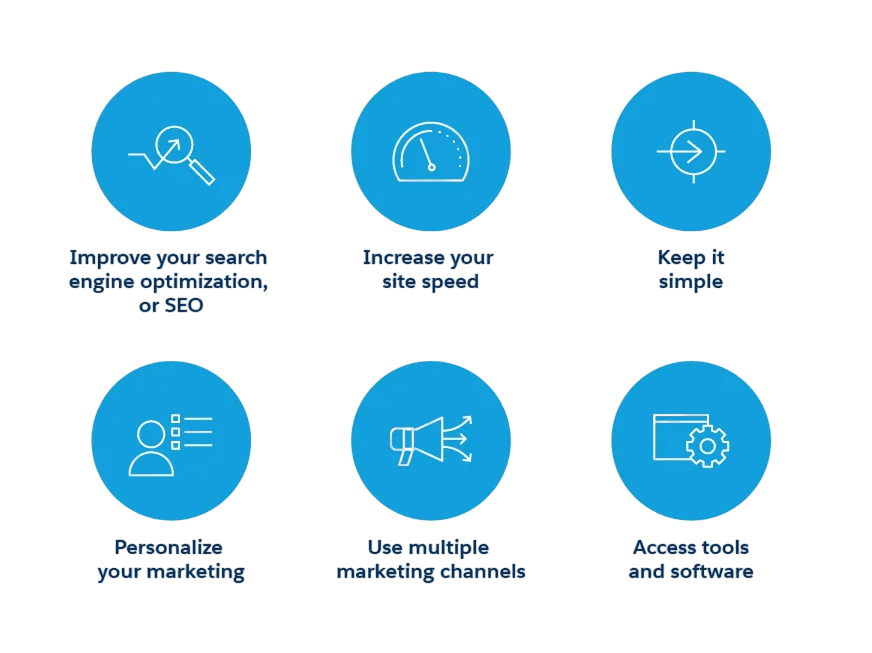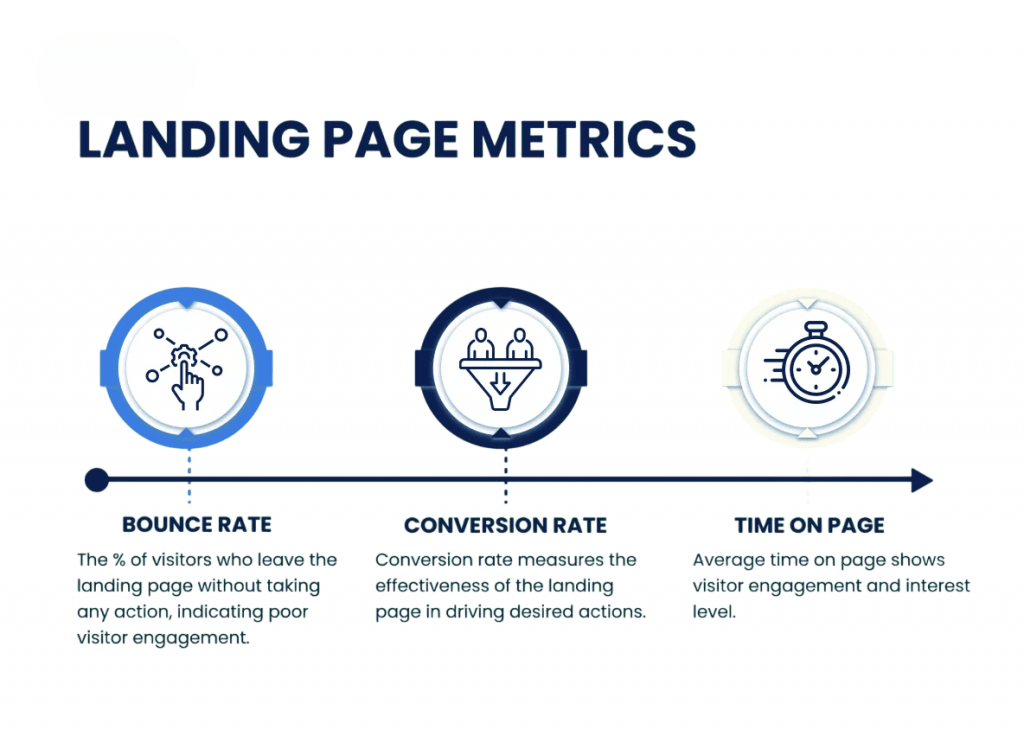
- What is a Landing Page?
- Landing Page Definition
- Landing Page vs Website
- Purpose of a Landing Page
- Essential Elements of a Landing Page
- Designing for Conversion
- Copywriting Tips
- A/B Testing Variants
- Mobile Optimization
- Integrating with Campaigns
- SEO for Landing Pages
- Measuring Performance
- Examples of Effective Pages
- Conclusion
What is a Landing Page?
A landing page is a standalone web page created specifically for a marketing or advertising campaign. It’s where a visitor “lands” after clicking on a link in an email, ad, or other digital source a conversion-focused concept explored in Digital Marketing Training, where learners design high-impact landing pages that capture attention, drive action, and optimize user experience across digital channels. Unlike regular website pages, which usually encourage exploration, a landing page is designed with a single focus or goal known as a call-to-action (CTA). This could be signing up for a newsletter, downloading an eBook, purchasing a product, or registering for a webinar.
Ready to Get Certified in Digital Marketing? Explore the Program Now Digital Marketing Online Training Offered By ACTE Right Now!
Landing Page Definition
In digital marketing, a landing page is defined as a page specifically designed to convert visitors into leads or customers. It functions independently from your website’s main navigation and focuses on a specific objective. The simplicity of the page eliminates distractions and guides the user toward a defined action, improving the likelihood of conversion. Whether it’s collecting contact details or encouraging a specific behavior, a landing page plays a vital role in lead generation.
Landing Page vs Website
- Landing pages focus on conversion, each having one clear goal. This is different from multi-purpose websites that promote general browsing.
- Digital marketing campaigns greatly benefit from landing pages. They capture user attention and encourage quick actions.
- Landing pages remove distractions and lead visitors toward a specific goal. This improves marketing effectiveness compared to detailed websites with many sections.
- The main difference between websites and landing pages is their purpose. Websites offer information and exploration, while landing pages aim to turn visitor interest into concrete results.
- Headline: Grabs attention and conveys the offer.
- Subheadline: Supports the headline with additional detail.
- Visuals: Images or videos that support the content.
- CTA (Call-to-Action): A clear, prominent button or link guiding users to the desired action.
- Lead Capture Form: For gathering user information.
- Social Proof: Testimonials, reviews, or trust badges.
- Benefit-Oriented Copy: Describes how the visitor will benefit.
- Implement A/B testing by systematically comparing two versions of a landing page to find design elements that improve conversion rates.
- Test one variable at a time, such as headlines, CTA placement, images, or color schemes. This way, you can gain clear, actionable insights from your experimental data.
- Use tools like Google Optimize and Optimizely to automate your testing processes and create precise performance analytics.
- Keep in mind that even small design changes can greatly affect user engagement and conversion potential. Continuous optimization is an important marketing strategy.
- Mobile Optimization is Essential. Over 50% of web traffic now comes from mobile devices. This makes responsive design a crucial strategy for digital success.
- Improve User Experience with Thoughtful Design. Implement responsive layouts, optimize image sizes, and create buttons that are easy to tap. This ensures users can interact smoothly on mobile.
- Mobile optimization performance is Key focus on fast page loading and smooth functionality across all screen sizes. This helps prevent user frustration and lowers bounce rates.
- Make Mobile Interactions Easy. Use mobile-friendly fonts, simplify form designs, and create an intuitive user experience. This encourages engagement and increases conversions.
- Conversion Rate: Percentage of visitors who complete the desired action.
- Bounce Rate: Visitors who leave without taking action.
- Average Time on Page: Indicates engagement.
- Traffic Source: Shows which channels are most effective.
- Airbnb Host Sign-Up Page: Focuses on income potential and ease of hosting.
- Shopify Free Trial Page: Uses a minimal form and a clear CTA to start selling.
- Slack’s Product Tour Page: Highlights benefits and includes testimonials.
To Explore Digital Marketing in Depth, Check Out Our Comprehensive Digital Marketing Online Training To Gain Insights From Our Experts!
Purpose of a Landing Page
The primary goal of a landing page is to drive visitors to take a specific action. It could be to collect user data (like email addresses), sell a product, or persuade users to register for an event. Landing pages are used in paid ad campaigns, email marketing, and social media promotions. Because they are goal-specific, they are more effective at converting visitors compared to generic web pages.
Essential Elements of a Landing Page
A high-converting landing page typically includes several critical components:
These elements work together to maintain user focus and encourage conversion.
Looking to Digital Marketing Training? Discover the Digital Marketing Expert Masters Program Training Course Available at ACTE Now!
Designing for Conversion
Good landing page design is clean, user-friendly, and focused. The layout should guide the user’s eyes toward the CTA. Using whitespace effectively helps to avoid clutter and direct attention. Contrasting colors can make the CTA button stand out design principles emphasized in Digital Marketing Training, where learners master visual hierarchy, user flow optimization, and high-conversion interface design. Responsive design ensures the landing page works well on all devices. Loading speed is also critical; slow pages lead to high bounce rates.
Copywriting Tips
The copy on a landing page must be concise, compelling, and benefit-driven. Avoid jargon and focus on the user’s needs. Use short paragraphs, bullet points, and headlines to break up content. Emphasize value, urgency, and clarity. Writing in the second person (“you”) helps create a direct connection with the visitor. A/B testing different versions of copy can also help determine what resonates most with the audience.
Preparing for Digital Marketing Job Interviews? Have a Look at Our Blog on Digital Marketing Interview Questions and Answers To Ace Your Interview!
A/B Testing Variants
Mobile Optimization
Integrating with Campaigns
Landing pages are most effective when integrated into a broader digital marketing strategy. Whether from email marketing, PPC ads, or social media campaigns, every traffic source should point to a relevant landing page. Tailoring each landing page to match the message and audience of its source improves engagement and conversion rates. UTM parameters can be used to track traffic sources and measure effectiveness.

SEO for Landing Pages
While landing pages are often used for paid campaigns, optimizing them for search engines can increase organic traffic. Use relevant keywords in titles, meta descriptions, and body content. Include alt tags for images and optimize page speed. Ensure mobile-friendliness and secure connections (HTTPS). Though SEO should not distract from the page’s primary goal, it can help attract the right audience over time.
Measuring Performance
To understand the success of a landing page, track metrics such as:
Using tools like Google Analytics, Hotjar, or CRM integrations, you can gather insights and refine your landing page strategy based on data.

Examples of Effective Pages
Successful landing pages across industries share a few key traits a compelling headline, clean design, strong CTA, and persuasive content. For instance:
These examples demonstrate how targeted messaging and a focused user experience can significantly drive conversions.
Conclusion
Landing pages are essential tools in digital marketing. When designed well, they serve as powerful lead generators and conversion points. With clear objectives, thoughtful design, compelling copy, and ongoing optimization, landing pages can deliver measurable results that elevate your marketing efforts an end-to-end capability developed through Digital Marketing Training, where learners master conversion strategy, performance tracking, and iterative design to maximize campaign impact. Whether you’re running ads, email campaigns, or social media promotions, pairing them with strategic landing pages is key to maximizing ROI. The impact of strategic landing pages is significant. They directly contribute to marketing success and improve the results of advertising campaigns. Imagine running a Google Ads campaign. A visitor clicks your ad and lands on your homepage. It’s full of different options, which might confuse them. They might leave. Now, imagine they land on a dedicated landing page. This page directly addresses the promise of the ad and features a clear call to action. This focused experience increases conversion rates.




